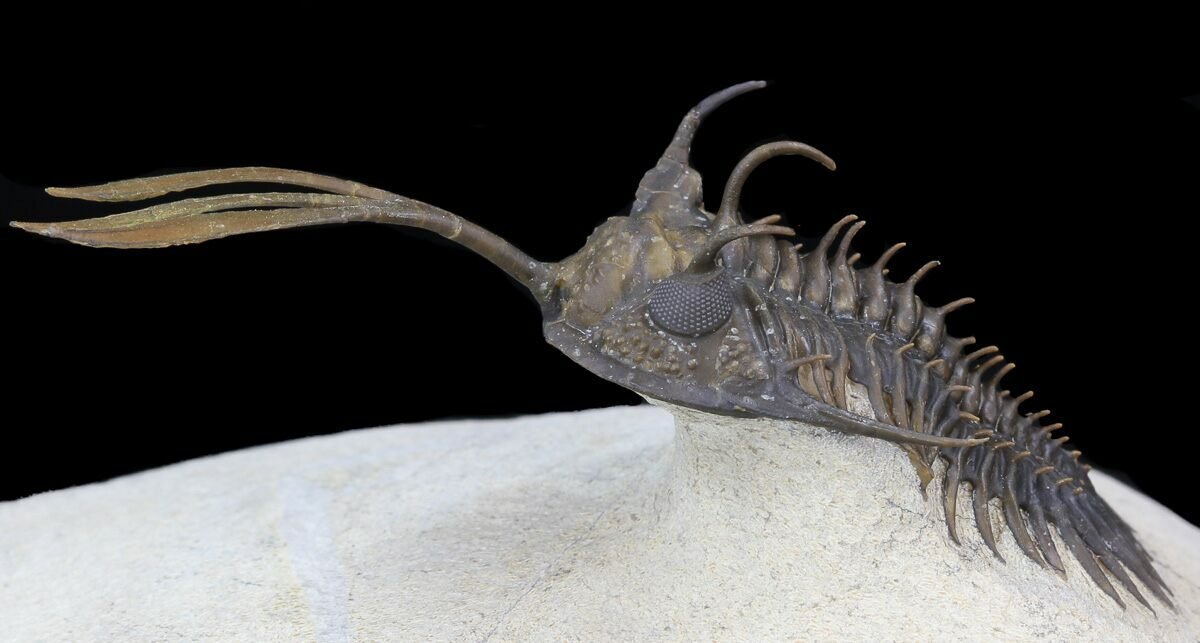This just in from PNAS: sexual combat in the Devonian!
In a new study, Alan Gishlick and Richard Fortey examine a genus of trilobites with trident structures protruding from their heads. They argue that the structures evolved for sexual jousting, which was big with trilobites back in the Devonian. Their key piece of evidence is a specimen that grew to maturity with a severely lopsided trident. This, the authors claim, is inconsistent with other functional interpretations of the structure. If the trilobite used the trident for feeding, it most likely wouldn’t have been able to reach maturity with a seriously deformed one. The same goes for defense. By contrast, animals often make it to sexual maturity with malformed “dueling equipment.” Here the authors enlist support from studies of mule deer and Rocky Mountain elk. Excellent.
For those who can’t get past the paywall, there is a nice write-up in the New York Times.








